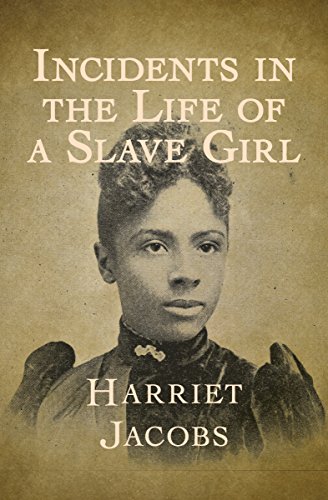
The document selected here is an excerpt from Harriet Jacobs’s narrative; ‘Incidents in the life of a Slave Girl’ which was published by the white abolitionist L. Maria Child to which Jacobs took the pseudonym ‘Linda Brent’. It is a primary source published in 1861, originally thought to be a work of fiction due to it’s ‘sensational’ content. The chapters covered contain an account of Jacobs’ experience as a mother in fleeing recapture by her previous master upon her escape from slavery. As well as this, she recounts her visit to Britain and discusses the societal differences she encountered, drawing comparisons from what she observed in the US. Prior to what is documented here, Jacobs was born in 1813 to an enslaved mother in North Carolina after who’s death she was unprotected from physical, sexual and emotional abuse by her owner. She was also a mother to two children, expressing in this excerpt that their welfare was ‘to be frustrated by that demon slavery’
The source itself provides a unique insight to slave life from a maternal woman’s stance. Jacobs provides her audience with a new and underrepresented perspective in other narratives published at the time, with the majority orientated to the male experience such as that of Frederick Douglas and Solomon Northup (with the exception of Mary Prince). With this in mind, the intended audience was possibly white upper-class women as they were more likely to be receptive to her story and take recognisable action. Jacobs aims to dispel any false ideas of slavery that censored the truths of slave life and generate sympathy for enslaved Africans (specifically women) by highlighting such a perspective. Capturing her new sense of ‘pure, unadulterated freedom’ and relief of being free from slavery: ‘I was beyond the reach of the bloodhounds’. As a result, her work helped contribute to the abolitionist movement by providing women of influence a relatable and impactful story. In addition, Jacobs provides a comparison of the reception she received in both the US and Great Britain as well as the relationship between race and religion in these two countries. Claiming that in the 10 months spent in Britain, she ‘never saw the slightest symptom of prejudice against colour’ and that English Christians were the ‘true disciples of Jesus’. This heavily differs from American ministers who she described to normalise the purchase and selling of enslaved Africans. Furthermore, she provides an insight into how black fugitives often had to navigate and present themselves around whites in order avoid recapture and/or racial abuse.
When we examine later comparative sources, there is a risk of narratives misrepresenting information and dubbing the experience of blacks in slavery. This is likely due to the general illiteracy of former slaves resulting in white journalists and writers stepping in to record their story. Examples of this can be seen within oral histories recorded by the WPA Federal Writer’s Project during the 1930s, although these were published much later than Jacobs’ work. This risk is less likely to manifest here as the known editor Lydia Maria Child had a reputation for confidently tackling issues of white supremacy, slavery and women’s rights. However, it should be recognised that this could have resulted in the polar issue of cherry-picking aspects of Jacob’s experience in order to coincide with this agenda, but not to the downfall of the source’s purpose.
With respect to the wider reading this week, Jacobs provides a considerably believable account of the experience of 19th century black women in addition to Seacole’s work. Her claims of being treated ‘without reference to my complexion’ in Britain could, within their own right be true. However when compared to other black women’s experience in Britain, is unconvincing as a representation of their wider experience. Seacole who was denied opportunity to exercise her medical knowledge in the Crimean war by all British war authorities, questioned if ‘American prejudices in colour had some root here’. Contrary to what Jacobs claims, we can conclude that there was in fact racism present in Britain although it had a less overt, systematic nature that oppressed blacks in their opportunities. Jacobs also touches upon the poverty of the white working class in England as discussed in Friar’s chapters where he unites struggles of political representation and poor living conditions between the white working class and former slaves. However, Jacobs quickly concludes that even ‘the most ignorant and most destitute of these peasants were a thousandfold better off than the most pampered slave.’

Hi Jodie, this is a perceptive analysis of the extracts from Jacob’s account. You mention Jacobs’s time in Britain and the positive image she portrays in contrast to her hounding and insecurity in the US. You have included some useful quotation and have also linked this account to this week’s session topic. You could say something on how the experiences of other notable black people in Britain that we looked at today was not all positive and that the short and controlled nature of Jacobs’s visit (she had a role as a household servant) may have shielded her form the everyday prejudice of wider British society. Your mention of WPA ‘as told to’ narratives in the US in the 1930s in useful but takes your presentation a bit over length. Overall, this is very well done.